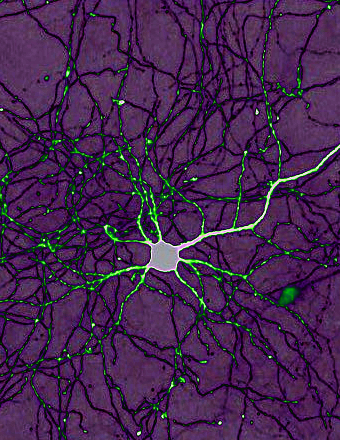AI imaginations trained
 Researchers in the US are working on artificial ‘imagination’.
Researchers in the US are working on artificial ‘imagination’.
Humans are naturally adept at imagining things.
For example; a person could be told to visualise an orange cat in their mind, then asked to imagine the same cat, but with coal-black fur, or to imagine the cat strutting along the Great Wall of China.
It takes only a fraction of a second for neuron activations in the brain to come up with variations of the picture presented, based on the subject’s previous knowledge of the world.
But while there have been huge advances in deep neural networks that match or surpass human performance in certain tasks, computers still struggle with the very human skill of ‘imagination’.
Now, a research team at the University of Southern California has developed an AI that uses human-like capabilities to imagine a never-before-seen object with different attributes.
“Humans can separate their learned knowledge by attributes - for instance, shape, pose, position, colour - and then recombine them to imagine a new object,” says the study's lead author Yunhao Ge.
“Our paper attempts to simulate this process using neural networks.”
This is one of the long-sought goals of AI: creating models that can extrapolate.
This means that, given a few examples, the model should be able to extract the underlying rules and apply them to a vast range of novel examples it has never seen before. But most machines are trained on sample features, such as simple pixel data, without taking into account the object’s attributes.
The researchers have begun to overcome this limitation using a concept called ‘disentanglement’; taking a group of sample images - rather than one sample at a time - and analysing the similarity between them to achieve something called “controllable disentangled representation learning”.
This method can be used to generate deepfakes, for instance, by disentangling human face movements and identity. By doing this, Ge says, “people can synthesise new images and videos that substitute the original person's identity with another person, but keep the original movement”.
Then, it recombines this knowledge to achieve “controllable novel image synthesis”, or what might be called imagination
The researchers say their framework can be compatible with nearly any type of data or knowledge, which widens the opportunity for applications.
For instance, in the field of medicine, it could help doctors and biologists discover more useful drugs by disentangling the medicine function from other properties, and then recombining them to synthesise new medicine.
Imbuing machines with imagination could also help create safer AI by, for instance, allowing autonomous vehicles to imagine and avoid dangerous scenarios previously unseen during training.
“Deep learning has already demonstrated unsurpassed performance and promise in many domains, but all too often this has happened through shallow mimicry, and without a deeper understanding of the separate attributes that make each object unique,” says Dr Laurent Itti, a professor of computer science.
“This new disentanglement approach, for the first time, truly unleashes a new sense of imagination in AI systems, bringing them closer to humans' understanding of the world.”








 Print
Print